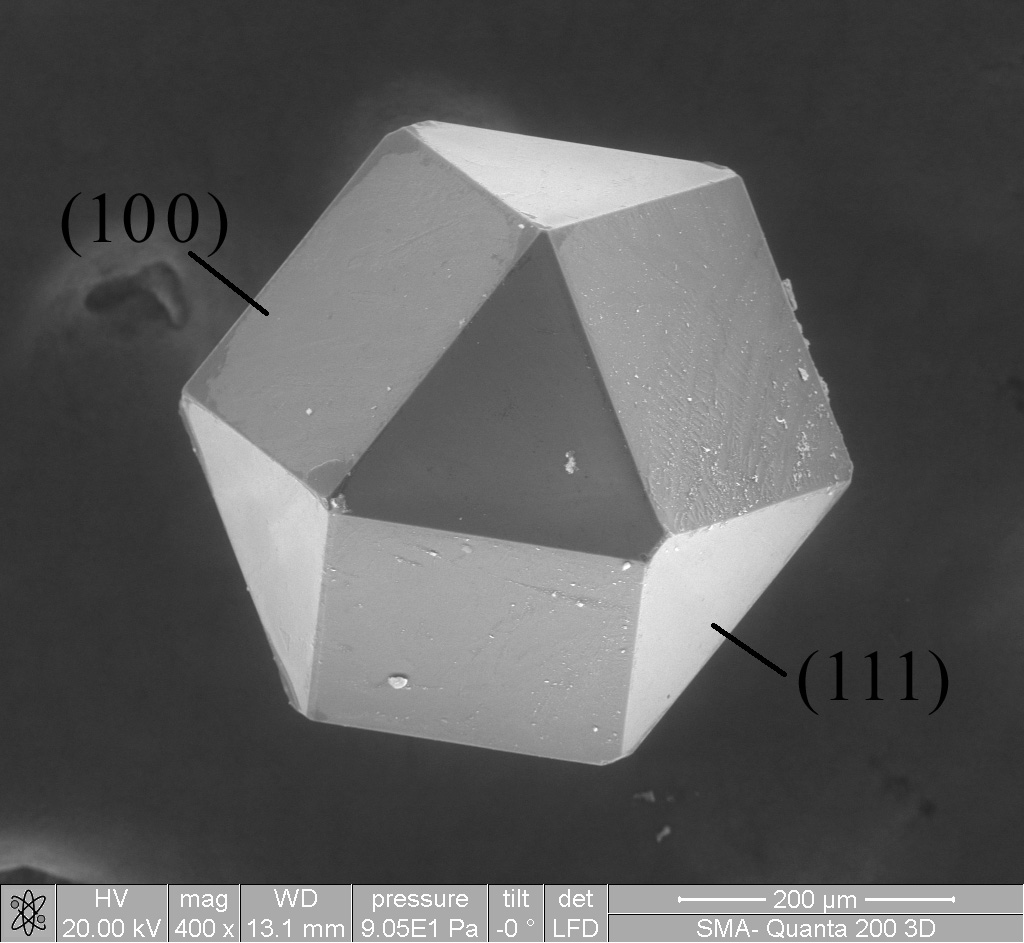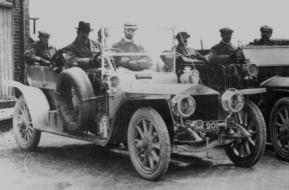|
Henry Royce Institute
The Henry Royce Institute (often referred to as ‘Royce’) is the UK’s national institute for advanced materials research and innovation. Vision Royce's vision is to identify challenges and stimulate innovation in advanced materials research to support sustainable growth and development. Royce aims to be a "single front door" to the UK’s materials research community. Its stated mission is to “support world-recognised excellence in UK materials research, accelerating commercial exploitation of innovations, and delivering positive economic and societal impact for the UK.” Operating from its Hub at the University of Manchester, Royce is a partnership of eleven leading UK institutions. Royce operates as a hub and spoke collaboration between the University of Manchester (the hub), and the spokes of the founding Partners National Nuclear Laboratory, UK Atomic Energy Authority, Imperial College London, University of Cambridge, University of Leeds, University of Liverpool, Un ... [...More Info...] [...Related Items...] OR: [Wikipedia] [Google] [Baidu] |
Henry Royce
Sir Frederick Henry Royce, 1st Baronet (27 March 1863 – 22 April 1933) was an English engineer famous for his designs of car and aeroplane engines with a reputation for reliability and longevity. With Charles Rolls (1877–1910) and Claude Johnson (1864–1926), he founded Rolls-Royce. Rolls-Royce initially focused on large 40–50 horsepower motor cars, the Silver Ghost and its successors. Royce produced his first aero engine shortly after the outbreak of the First World War, and aircraft engines became Rolls-Royce's principal product. Royce's health broke down in 1911, and he was persuaded to leave his factory in the Midlands at Derby and, taking a team of designers, move to the south of England spending winters in the south of France. He died at his home in Sussex in the spring of 1933. Early life Royce was born in Alwalton, Huntingdonshire, near Peterborough on 27 March 1863 to Mary (née King) and James Royce.Reese, pp. 17-22, 24-27 He had four older siblings, Emily ... [...More Info...] [...Related Items...] OR: [Wikipedia] [Google] [Baidu] |
Materials Science
Materials science is an interdisciplinary field of researching and discovering materials. Materials engineering is an engineering field of finding uses for materials in other fields and industries. The intellectual origins of materials science stem from the Age of Enlightenment, when researchers began to use analytical thinking from chemistry, physics, and engineering to understand ancient, phenomenological observations in metallurgy and mineralogy. Materials science still incorporates elements of physics, chemistry, and engineering. As such, the field was long considered by academic institutions as a sub-field of these related fields. Beginning in the 1940s, materials science began to be more widely recognized as a specific and distinct field of science and engineering, and major technical universities around the world created dedicated schools for its study. Materials scientists emphasize understanding how the history of a material (''processing'') influences its struc ... [...More Info...] [...Related Items...] OR: [Wikipedia] [Google] [Baidu] |
UKAEA
The United Kingdom Atomic Energy Authority is a UK government research organisation responsible for the development of fusion energy. It is an executive non-departmental public body of the Department for Energy Security and Net Zero (DESNZ). The authority focuses on United Kingdom and European fusion energy research programmes at Culham in Oxfordshire, including the world's most powerful operating fusion device, the Joint European Torus (JET). The research aims to develop fusion power as a commercially viable, environmentally responsible energy source for the future. A record 59 megajoules of sustained fusion energy was demonstrated by scientists and engineers working on JET in December 2021. In JET's final deuterium-tritium experiments (DTE3), high fusion power was consistently produced for 5 seconds, resulting in a ground-breaking record of 69 megajoules using a mere 0.2 milligrams of fuel. JET has now ceased operating and decommissioning has commenced. United Kingdom Atomic ... [...More Info...] [...Related Items...] OR: [Wikipedia] [Google] [Baidu] |
Circular Economy
A circular economy (also referred to as circularity or CE) is a model of resource Production (economics), production and Resource consumption, consumption in any economy that involves sharing, leasing, Reuse, reusing, repairing, refurbishing, and recycling existing materials and products for as long as possible. The concept aims to tackle global challenges such as climate change, biodiversity loss, waste, and pollution by emphasizing the design-based implementation of the three base principles of the model. The main three principles required for the transformation to a circular economy are: designing out waste and pollution, keeping products and materials in use, and regenerating natural systems. CE is defined in contradistinction to the traditional linear economy. The idea and concepts of a circular economy have been studied extensively in academia, business, and government over the past ten years. It has been gaining popularity because it can help to minimize Greenhouse gas emis ... [...More Info...] [...Related Items...] OR: [Wikipedia] [Google] [Baidu] |
Quantum Technology
Quantum engineering is the development of technology that capitalizes on the laws of quantum mechanics. This type of engineering uses quantum mechanics to develop technologies such as quantum sensors and quantum computers. Devices that rely on quantum mechanical effects such as lasers, MRI imagers and transistors have revolutionized many areas of technology. New technologies are being developed that rely on phenomena such as quantum coherence and on progress achieved in the last century in understanding and controlling atomic-scale systems. Quantum mechanical effects are used as a resource in novel technologies with far-reaching applications, including quantum sensors and novel imaging techniques, secure communication ( quantum internet) and quantum computing. History The field of quantum technology was explored in a 1997 book by Gerard J. Milburn. It was then followed by a 2003 article by Milburn and Jonathan P. Dowling, and a separate publication by David Deutsch on the sa ... [...More Info...] [...Related Items...] OR: [Wikipedia] [Google] [Baidu] |
Fusion Power
Fusion power is a proposed form of power generation that would generate electricity by using heat from nuclear fusion reactions. In a fusion process, two lighter atomic nuclei combine to form a heavier nucleus, while releasing energy. Devices designed to harness this energy are known as fusion reactors. Research into fusion reactors began in the 1940s, but as of 2025, no device has reached net power. Fusion processes require fuel, in a state of plasma, and a confined environment with sufficient temperature, pressure, and confinement time. The combination of these parameters that results in a power-producing system is known as the Lawson criterion. In stellar cores the most common fuel is the lightest isotope of hydrogen (Protium (isotope), protium), and gravity provides the conditions needed for fusion energy production. Proposed fusion reactors would use the heavy hydrogen isotopes of deuterium and tritium for DT fusion, for which the Lawson criterion is the easiest to achieve ... [...More Info...] [...Related Items...] OR: [Wikipedia] [Google] [Baidu] |
Hydrogen Economy
The hydrogen economy is an umbrella term for the roles hydrogen can play alongside low-carbon electricity to reduce emissions of greenhouse gases. The aim is to reduce emissions where cheaper and more energy-efficient clean solutions are not available. In this context, ''hydrogen economy'' encompasses the production of hydrogen and the use of hydrogen in ways that contribute to phasing-out fossil fuels and limiting climate change. Hydrogen can be produced by several means. Most hydrogen produced today is ''gray hydrogen'', made from natural gas through steam methane reforming (SMR). This process accounted for 1.8% of global greenhouse gas emissions in 2021.Greenhouse gas emissions totalled 49.3 Gigatonnes CO2e in 2021. ''Low-carbon hydrogen'', which is made using SMR with carbon capture and storage ('' blue hydrogen''), or through electrolysis of water using renewable power ('' green hydrogen''), accounted for less than 1% of production. Virtually all of the 100 million tonnes ... [...More Info...] [...Related Items...] OR: [Wikipedia] [Google] [Baidu] |
Low-carbon Power
Low-carbon electricity or low-carbon power is electricity produced with substantially lower greenhouse gas emissions over the entire lifecycle than power generation using fossil fuels. The energy transition to low-carbon power is one of the most important actions required to limit climate change. Low carbon power generation sources include wind power, solar power, nuclear power and most hydropower. The term largely excludes conventional fossil fuel plant sources, and is only used to describe a particular subset of operating fossil fuel power systems, specifically, those that are successfully coupled with a flue gas carbon capture and storage (CCS) system. Globally almost 40% of electricity generation came from low-carbon sources in 2020: about 10% being nuclear power, almost 10% wind and solar, and around 20% hydropower and other renewables. Very little low-carbon power comes from fossil sources, mostly due to the cost of CCS technology. Text was copied from this sourc ... [...More Info...] [...Related Items...] OR: [Wikipedia] [Google] [Baidu] |
Rolls-Royce Limited
Rolls-Royce Limited was a British luxury car and later an aero-engine manufacturing business established in 1904 in Manchester by the partnership of Charles Rolls and Henry Royce. Building on Royce's good reputation established with his Crane (machine), cranes, they quickly developed a reputation for superior engineering by manufacturing luxury cars. The business was incorporated as "Rolls-Royce Limited" in 1906, and a new factory in Derby was opened in 1908. The First World War brought the company into manufacturing aero-engines. Joint development of jet engines began in 1940, and they entered production in 1944. Rolls-Royce has since built an enduring reputation for the development and manufacturing of engines for military and commercial aircraft. In the late 1960s, Rolls-Royce was adversely affected by the mismanaged development of its advanced Rolls-Royce RB211, RB211 jet engine and consequent cost over-runs, though it ultimately proved a great success. In 1971, the owners w ... [...More Info...] [...Related Items...] OR: [Wikipedia] [Google] [Baidu] |
Rosalind Franklin Institute
The Rosalind Franklin Institute is a physical sciences research centre devoted to developing new technologies for medical research and the life sciences. They are supported by the Government of the United Kingdom located at the Harwell Science and Innovation Campus, Oxfordshire, England. It is named after an English chemist Rosalind Franklin, whose discoveries provided the key data for the correct explanation of the helical structure of DNA in 1953. Launched on 6 June 2018, it was officially opened on 29 September 2021. The government approval was announced on 23 February 2017 by Greg Clark, Secretary of State for Business, Energy and Industrial Strategy. According to the press release the basis of the name was "in honour of the pioneering British scientist osalind Franklinwhose use of X-rays to study biological structures played a crucial role in the discovery of DNA's 'double helix' structure by Francis Crick and James Watson". The objective was "to develop disruptive new techn ... [...More Info...] [...Related Items...] OR: [Wikipedia] [Google] [Baidu] |
The Faraday Institution
The Faraday Institution is the United Kingdom's research institute aiming to advance battery science and technology. It was established in 2017 as part of the UK's wider Faraday Battery Challenge. It states its mission as having four key areas: "electrochemical energy storage research, skills development, market analysis and early-stage commercialisation". The Institution is headquartered at the Harwell Science and Innovation Campus near Oxford. It is a limited company and is a registered charity with an independent board of trustees. Name The Faraday Institution is named after Michael Faraday, an English scientist who contributed to the basic understanding of electromagnetism and electrochemistry. He popularised the now common battery terminology "anode", "cathode", "electrode" and "ion". Faraday lectured on education at the Royal Institution in 1854 and appeared before a Public Schools Commission to give his views on education in Great Britain. Between 1827 and 1860 at ... [...More Info...] [...Related Items...] OR: [Wikipedia] [Google] [Baidu] |






